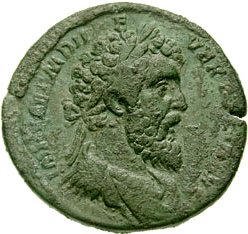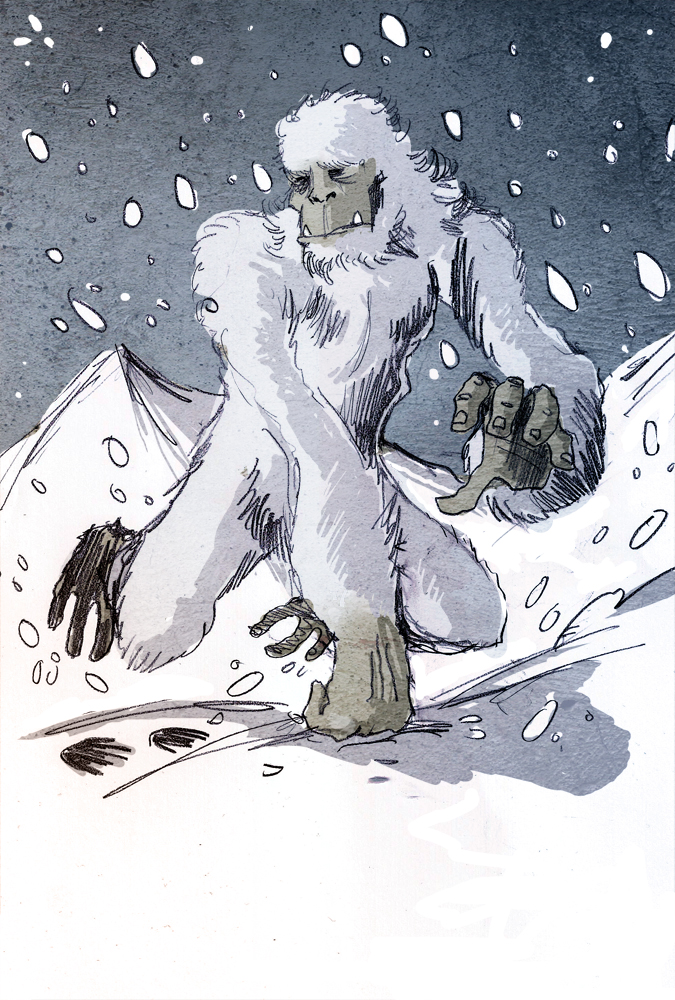Money and politics have always gone hand in hand, but usually there is at least a pretense that it is about something else. Not so in this case.
Didius Julianus was a Roman senator who won an auction to become emperor. The Praetorian Guard killed the previous emperor and then held an auction to sell the position of emperor to the highest bidder. Didius was the highest bidder. He paid his cash and became emperor on the 28th of March, 193 AD.
His reign didn't last long. The original assassination started the Roman Civil War of 193-197 and one of its first casualties was Didius only 9 weeks after he became emperor.
This is really starting in the middle though. There were a total of 5 emperors of Rome in 193 AD. You can click through to read the gripping stories of all 5, but the first one is a fantastic example of a ruler sewing the seeds of his own destruction.
Commodus became emperor in 180 AD, but his sane rule ended when a close advocate, Cleander, was assassinated. He began to fear for his life, so he started to massacre the nobles and aristocracy. His brilliant plan was to basically get rid of anyone who could possibly challenge his rule. Of course, his actions motivated those exact people to challenge his rule. Three nobles decided they're rather live than die, so they had Commodus strangled.
Rule of Rome could get pretty exciting at times. In addition to the year of the 5 emperors, there was also a year of the four emperors and a year of the six emperors.
42's Encyclopædic Journey
I read the encyclopædia so you don't have to. I bring a daily dose of knowledge which is sometimes obscure, but always interesting. A while back I splurged and paid $700 for an 8 year old set of the Encyclopædia Britannica. I'm reading it cover to cover, page by page.
Tuesday, August 4, 2015
Monday, July 27, 2015
Dick, Philip K. - Total Recall
The movie Total Recall was based on the short story "We Can Remember It For You Wholesale" by Philip K. Dick. The story was originally published in The Magazine of Fantasy & Science Fiction in April 1966.
Go ahead and click through to read about the story. It's the same story I remember in Total Recall, but the final twist is different and actually pretty compelling. I'm planning to get a copy of the story so I can read the whole thing.
Go ahead and click through to read about the story. It's the same story I remember in Total Recall, but the final twist is different and actually pretty compelling. I'm planning to get a copy of the story so I can read the whole thing.
Sunday, July 26, 2015
dicastery - juries used to be much larger
In ancient Greece, a dicastery was a group of 6000 citizens that formed a jury pool that was split into groups of 500. A majority vote was used to determine the outcome. A tie vote resulted in acquittal.
This sort of thing made bribery more difficult given the large number of people involved.
This sort of thing made bribery more difficult given the large number of people involved.
Saturday, July 25, 2015
dice - thousands of years old
The forerunner of dice were probably knucklebones (ankle bones of sheep) which were marked on 4 sides. Modern dice have been around for quite some time though. Dice equivalent to modern dice have been found in Egyptian tombs dating from 2000 BC.
Here is a history of dice that I can be found at awesomedice:
There are a variety of ways to cheat with dice. A "shape" is a die that is slightly rectangular. Such dice are slightly more likely to land on the longer sides.
A "loaded" die has weight added just below the surface of one side. The opposite side will be more likely to show up.
A "top" or "bottom" die has one or more numbers repeated so that certain numbers are more likely and others will never show up. Better be careful with these. You'll need good slight of hand to introduce these into a throw and then remove them before someone notices.
Here is a history of dice that I can be found at awesomedice:
 |
| history of dice from awesomedice.com |
A "loaded" die has weight added just below the surface of one side. The opposite side will be more likely to show up.
A "top" or "bottom" die has one or more numbers repeated so that certain numbers are more likely and others will never show up. Better be careful with these. You'll need good slight of hand to introduce these into a throw and then remove them before someone notices.
Friday, July 24, 2015
ABO blood group systems - evidence of ancient migrations
 |
| A allele in Native Populations |
 |
| B allele in Native Populations |
 |
| O allele in Native Populations |
Thursday, July 23, 2015
Ableman v. Booth - federal government rules all. Taney was a false literalist.
 |
| Roger B. Taney |
The name sounded familiar to me, but it wasn't until I read about Ableman v. Booth in Britannica that I learned that Taney made some major pro-slavery rulings during his tenure.
Ableman v. Booth was a decision that ruled that state courts cannot issue rulings that contradict rulings from federal courts. The Wisconsin Supreme Court attempted to rule the Fugitive Slave Act of 1850 unconstitutional, despite a federal ruling that it was not. The Supreme Court unanimously ruled that state courts can't do that.
That ruling has obviously stuck around, but Taney's court didn't use that opportunity to declare the Fugitive Slave Act unconstitutional.
The big one was Dred Scott, a widely derided 7-2 decision which led indirectly to the US Civil War. This ruling held that African Americans, whether enslaved or free, could not be American citizens and had no standing to sue in federal court. Furthermore, it rules that the federal government was not allowed to regulate slavery in federal territories acquired after the creation of the US.
Moral issues aside, this indirectly led to the civil war because up until this point, many people outside the south were willing to allow slavery to exist just so long as their own states didn't allow it. Dred Scott essentially made it impossible for many states or the federal government to outlaw slavery. Now, slavery was an all or nothing issue, so the anti-slavery was strengthened greatly by this.
Prior to Dred Scott, Democratic Party politicians had sought repeal of the Missouri Compromise, and were finally successful in 1854 with the passage of the Kansas–Nebraska Act. This act permitted each newly admitted state south of the 40th parallel to decide whether to be a slave state or free state. Now, with Dred Scott, the Supreme Court under Taney sought to permit the unhindered expansion of slavery into the territories.
Wednesday, July 22, 2015
abominable snowman - a bear tale
The Abominable Snowman (aka. Yeti) has some history behind it. It's a creature that is supposed to inhabit the Himalayas at about the level of the snow line. Pre-19th century there were pre-Buddhist beliefs of some Himalayan people which involved worshiping a "Glacier Being" as a God of the Hunt.
Over the 19th and 20th centuries, many reports have been made of finding large footprints or seeing a creature in the distance walking on its hind legs.
In the 1950's, there was legitimate belief that a large ape like creature actually existed in the Himalayas. This is not really a particularly far fetched sort of idea. These weren't claims that aliens were visiting or that ESP was real, so there were expeditions sent out to try and find the creature.
As a random bit of trivia, it's funny that in 1959 James "Jimmy" Stewart reportedly smuggled the remains of a supposed Yeti in his luggage when he flew from India to London. This is the so called Pangboche Hand. Go ahead and click on that one. It's kind of a surreal story.
Ultimately, all analyzed hair samples claimed to be from a Yeti have turned out to be some other animal. However, the tracks might actually be real tracks created by bears. Britannica claims that at certain gaits, bears place their hind-foot partly over the print of the forefoot thus making a large imprint like an enormous human footprint positioned in the opposite direction.
I wasn't able to find any examples of overlapping prints making prints in the opposite direction, but this page gives a variety of examples comparing prints made by overlapping bear tracks.
Subscribe to:
Posts (Atom)




